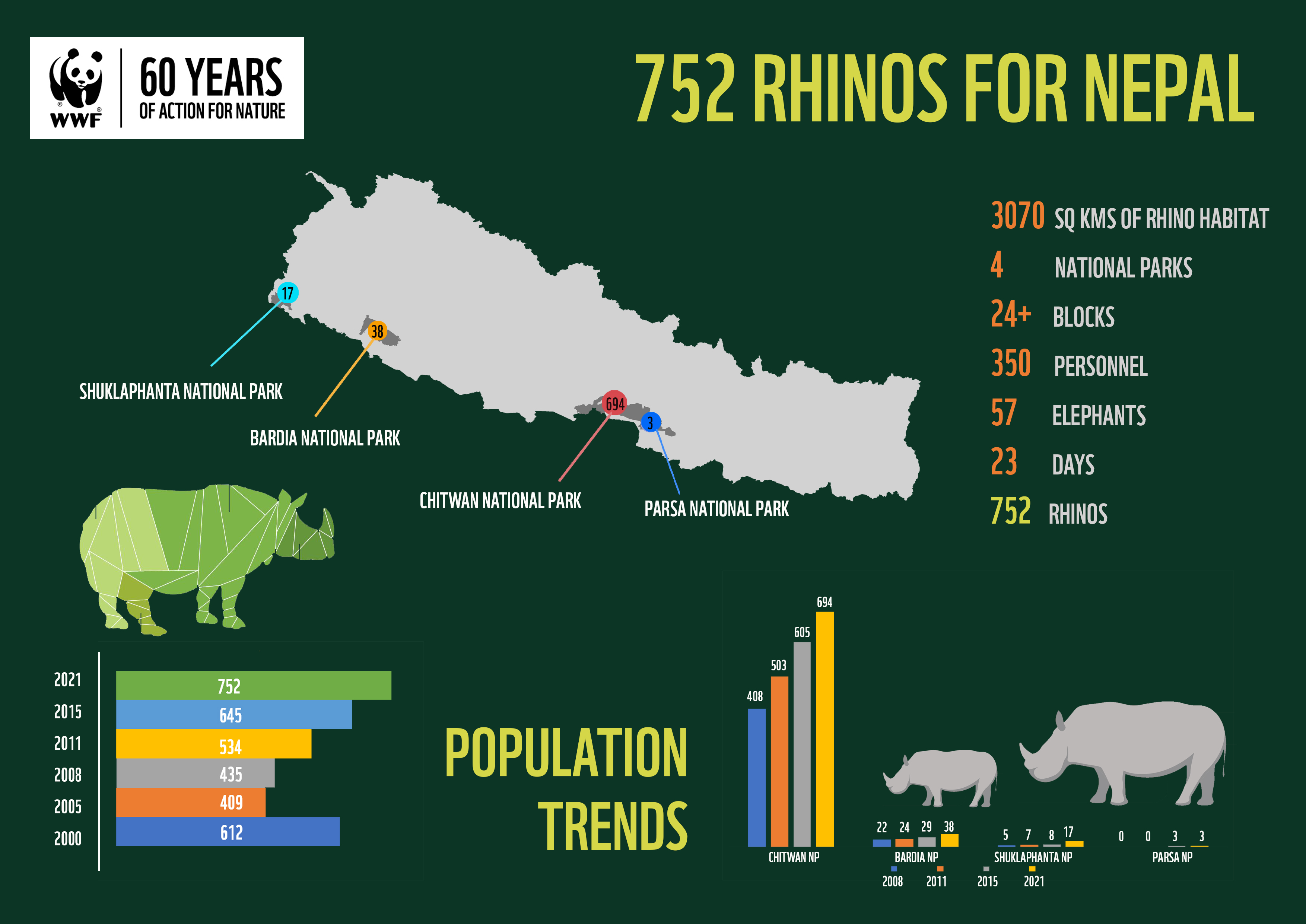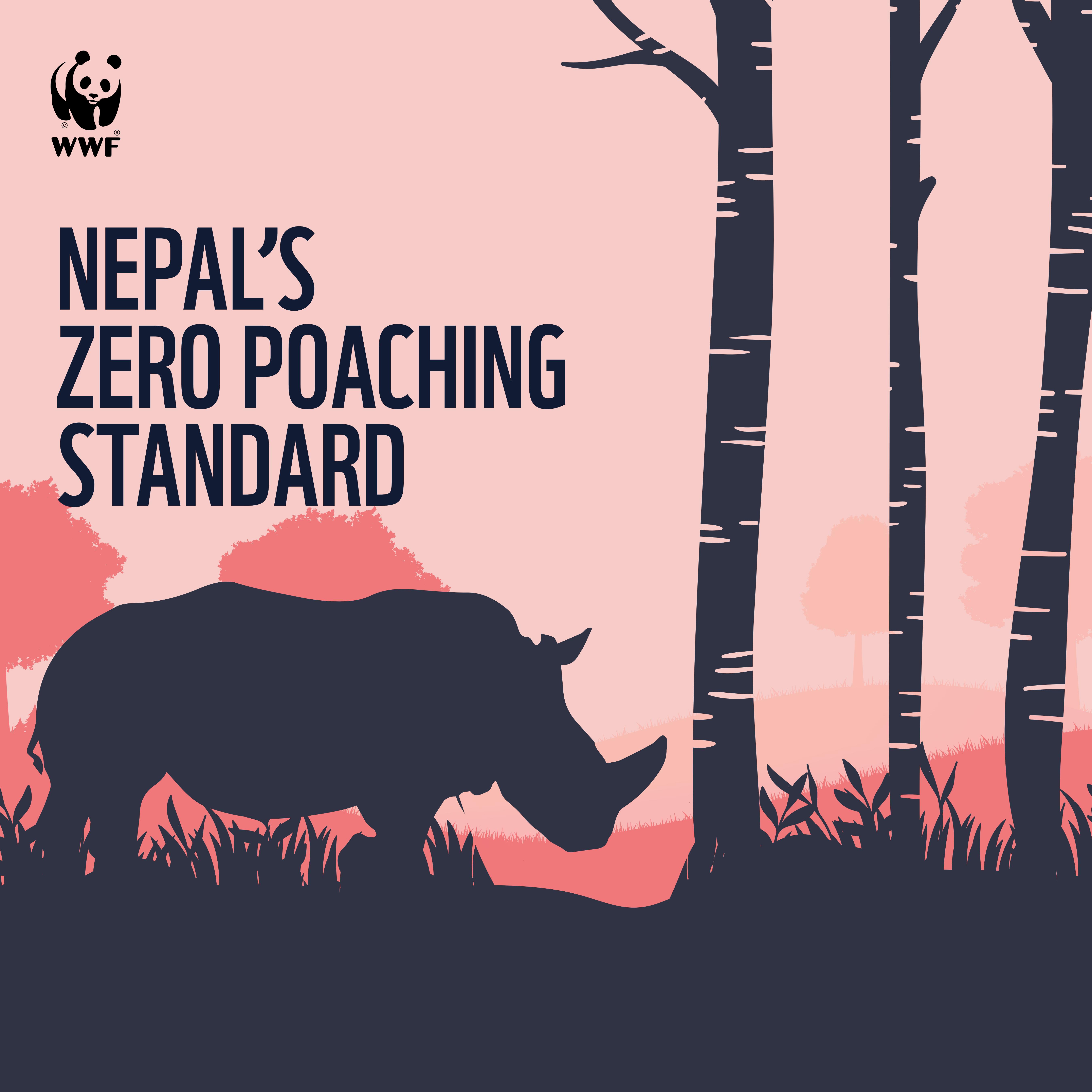The WWF is run at a local level by the following offices...

Our mission
Our Story
At WWF, we firmly believe people and nature are inextricably linked. Our mission is to stop the degradation of our planet’s natural environment, and build a future Nepal in which people live in harmony with nature.
Our roots in Nepal extend back to 1967, when WWF first launched a rhino conservation program in Chitwan. However the WWF Nepal office was formally established only in 1993.
Through the years, WWF Nepal has progressed towards a landscape approach that prioritizes community-based conservation as the foundation for a sustainable future, benefitting approximately 2.1 million people.

Our Vision
OUR AMBITION
From its origins as a small group of committed wildlife enthusiasts, WWF has grown into one of the world's largest and most respected independent conservation organizations, active in over 100 countries.
Over this time, WWF’s focus has evolved from localized efforts in favor of a single species and individual habitats to an ambitious strategy to preserve biodiversity and achieve sustainable development across the globe.
WWF-Nepal envisions a prosperous Nepal, with an active and socially responsible citizenry that a greater sense of stewardship towards the environment.

OUR VALUES
We celebrate and respect diversity in nature and among the people, partners, and communities with whom we work. Across the many cultures and individuals that represent WWF, we are unified by one mission, one brand, and one common set of values:
Courage: We demonstrate courage through our actions, we work for change where it’s needed, and we inspire people and institutions to tackle the greatest threats to nature and the future of the planet, which is our home.
Integrity: We live the principles we call on others to meet. We act with integrity, accountability and transparency, and we rely on facts and science to guide us and to ensure we learn and evolve.
Respect: We honor the voices and knowledge of the people and communities that we serve, and we work to secure their rights to a sustainable future.
Collaboration: We deliver impact at the scale of the challenges we face through the power of collective action and innovation.
MESSAGE FROM THE COUNTRY REPRESENTATIVE
 WWF Nepal’s thirty-year conservation journey has had its fair share of celebration, achievements, and challenges. WWF Nepal successfully closed the USAID funded Hariyo Ban Program in 2021; after ten years of operation with many conservation milestones achieved for people and nature. Nepal is also on track to achieve the global goals of doubling Nepal's tiger numbers and has recorded tigers at altitudes of ~2500 meters in western Nepal, and ~3200 meters in eastern Nepal. Meanwhile, rhino conservation has reached a historic record with 752 rhinos this year, a 16% increase since the last national rhino count in 2015.
WWF Nepal’s thirty-year conservation journey has had its fair share of celebration, achievements, and challenges. WWF Nepal successfully closed the USAID funded Hariyo Ban Program in 2021; after ten years of operation with many conservation milestones achieved for people and nature. Nepal is also on track to achieve the global goals of doubling Nepal's tiger numbers and has recorded tigers at altitudes of ~2500 meters in western Nepal, and ~3200 meters in eastern Nepal. Meanwhile, rhino conservation has reached a historic record with 752 rhinos this year, a 16% increase since the last national rhino count in 2015.
Most importantly, WWF Nepal has prepared and rolled out its first landscape level Environmental and Social Safeguards Framework (ESSF) screening tool and mitigation plan. These achievements have been made possible by a committed government, supported by dedicated communities, and determined conservation actors. As we continue our conservation journey, we are committed to establish Nepal as a living example of center of excellence.
While the COVID-19 pandemic has been challenging, I am privileged to have a great team, who have been able to deliver conservation impact with national and global recognition despite the political instability, independent review, media allegations and ongoing pandemic.
With climate change, an active driver of emerging issues in freshwater, forests and wildlife, WWF Nepal is supporting the Government of Nepal, and working with partners and local communities to address this critical issue through innovative and synergetic actions. WWF Nepal aims to create a sustainable environment for all life on earth by expanding its work from indicator megafauna, to also focus on other small mammals such as the pangolin and red panda, freshwater species such as the gharial, otter and river dolphin, as well medicinal and aromatic plant species along with focusing on climate change and it’s impacts on all living species.
Thank you for your continued support.
Ghana S Gurung, PhD

MR. ANIL CHITRAKAR
MR. KUNDA DIXIT
MS. LISA CHOEGYAL
OUR GOODWILL AMBASSADOR
VENERABLE ANI CHOYING DROLMA
OUR YOUTH ADVISOR
MR ANIL KESHARY SHAH
Nepal’s rhino population has shown a promising 16% increment following the results of the National Rhino Count 2021, bringing current population numbers to 752 individuals compared to 645 in 2015 in Nepal’s Terai Arc Landscape. The overall growth in population size is indicative of ongoing protection and habitat management efforts by protected area authorities despite challenging contexts these past years, and yet another milestone in Nepal’s conservation journey showcasing the impact of concerted efforts of all stakeholders.

In 2018, Nepal made headlines with its new tiger population update of 235 tigers, making it the first country to almost double its tiger numbers by 2022, the next Year of the Tiger. A testament to the effectiveness of Nepal’s collaborative approach to tiger conservation. After a century of decline in tiger numbers, Nepal is helping bend the curve by serving as a model for the world’s tiger range countries on the road to 2022.

Nepal made headway in the fight against poaching and illegal wildlife trade with the achievement of 365 days of zero poaching of rhinos for the first time in 2011. Since then, Nepal has been successful in celebrating zero poaching of rhinos on seven occasions, until 2020. At the heart of this conservation milestone is the country’s successful implementation of the Zero Poaching Toolkit spearheaded by WWF to help national and state agencies, protected area managers, rangers and other frontline protection staff close gaps in anti-poaching efforts.

The Kangchenjunga Conservation Area (KCA) lies within the Sacred Himalayan Landscape and is a key link in a chain of transboundary protected areas, maintaining contiguity between Quomoloangma Nature Reserve in China and Kanchendzonga Biosphere Reserve in India. Declared as “A Gift to the Earth” by the people of Nepal the Government of Nepal took the historic step of handing KCA over to local communities, making it the first protected area to be managed by local community stewards, in 22 September 2006.